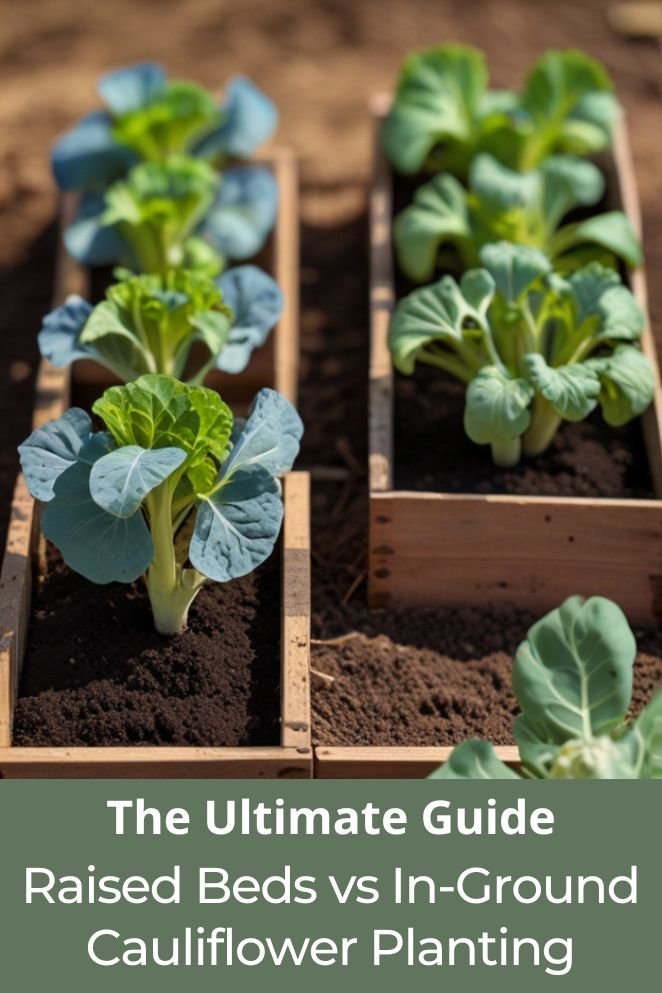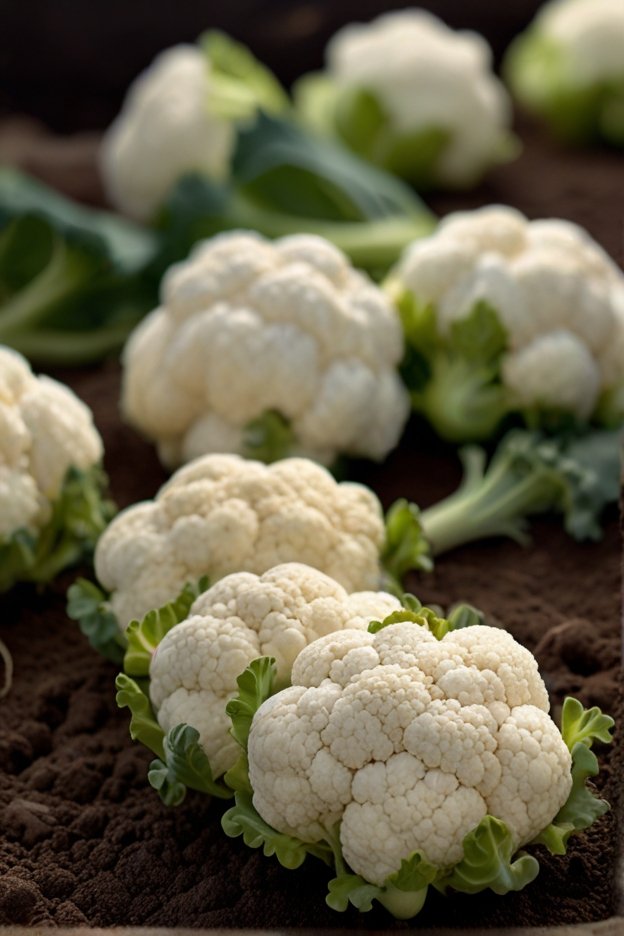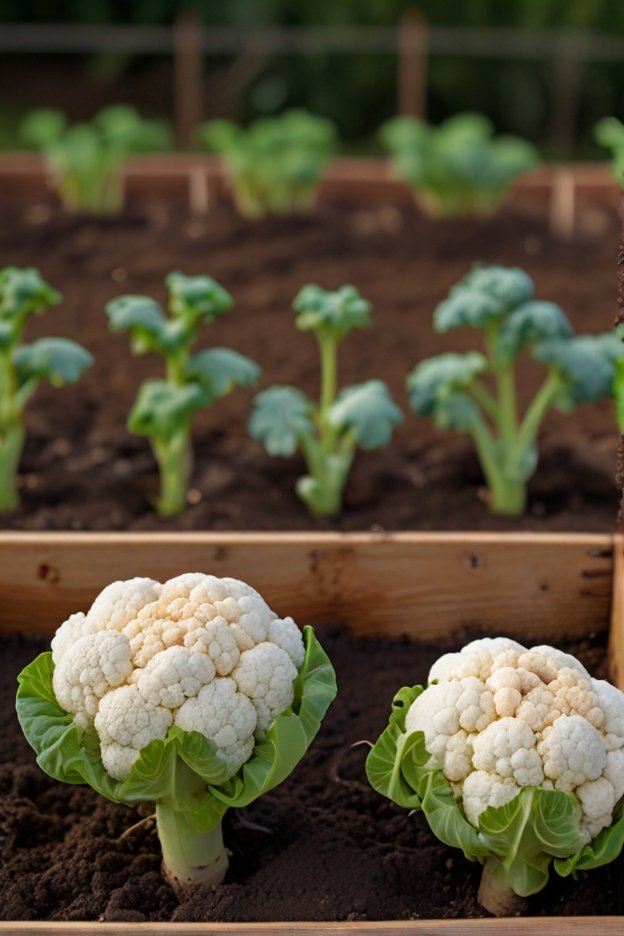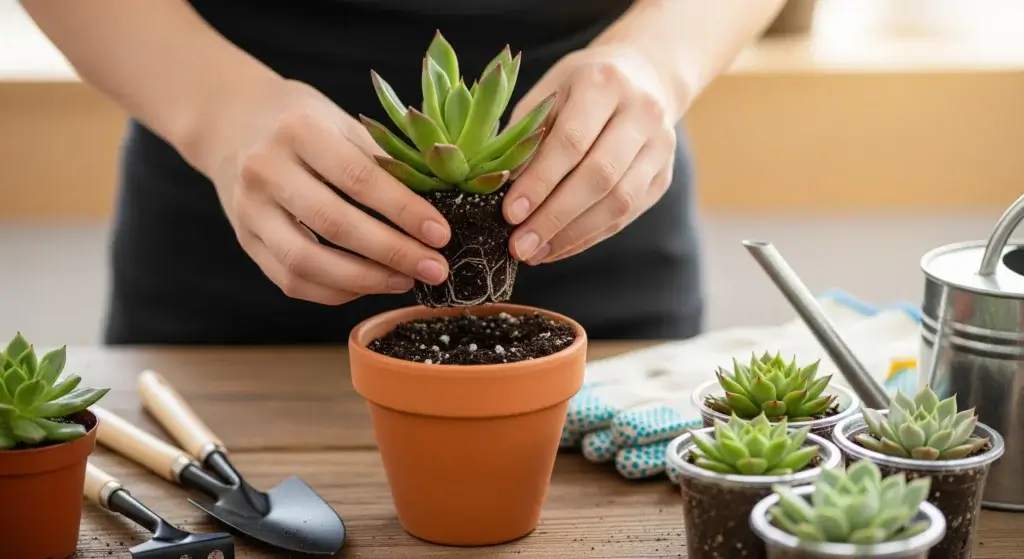
When it comes to growing cauliflower, deciding between raised bed and in-ground planting methods can impact the success of your crop.
In this blog post, we will explore the advantages and disadvantages of both approaches to help you make an informed decision for your garden.
Raised Bed Cauliflower

Raised beds offer numerous advantages for growing cauliflower, making them a popular choice among gardeners.
Here’s a closer look at the benefits and drawbacks of using raised beds for cauliflower cultivation:
Advantages
- Read also: DIY Cauliflower Row Covers for Garden Protection
- Read also: Cauliflower Powerhouse: The Nutrient Riches For Cauliflower
Superior drainage
Raised beds provide excellent drainage, which is crucial for preventing clubroot disease, a common threat to cauliflower plants.
By elevating the soil level, excess water can drain away more effectively, reducing the risk of waterlogged roots and fungal infections.
Controlled soil quality
In raised beds, you have full control over the soil composition, allowing you to tailor it to meet the specific needs of cauliflower plants.
You can create a soil mix that is rich in organic matter and well-draining, providing an optimal growing environment for healthy root development and robust growth.
Faster warming
Raised beds warm up more quickly in the spring compared to traditional in-ground planting areas.
The elevated position of the soil allows it to absorb heat more efficiently from the sun, resulting in warmer soil temperatures.
This enables you to plant cauliflower earlier in the season and potentially extend the harvest period.
Easier maintenance
The elevated position of raised beds makes them more accessible for planting, weeding, and harvesting.
You can tend to your cauliflower plants more comfortably without the need to bend over or kneel down, reducing strain on your back and knees.
This ease of access also facilitates better pest and disease management.
Less weed pressure
Raised beds act as a barrier against weeds from surrounding soil, minimizing weed competition and reducing the need for ongoing weed control efforts.
This can save you time and effort in maintaining a weed-free garden, allowing your cauliflower plants to thrive without competing for resources.
Disadvantages
Cost
One potential drawback of raised beds is the initial cost associated with purchasing or building them.
While raised beds offer long-term benefits, there may be upfront expenses involved in materials, construction, or purchasing pre-made raised bed kits.
Watering needs
Raised beds may dry out more quickly than in-ground planting areas, especially during hot weather.
This means you may need to water your cauliflower plants more frequently to ensure they receive an adequate supply of moisture for healthy growth.
Proper irrigation management is essential to prevent soil drying out and maintain optimal plant hydration levels.
In-Ground Cauliflower

In-ground planting presents both advantages and disadvantages for cultivating cauliflower.
Here’s an in-depth exploration of the pros and cons:
Advantages
Cost-effective
Planting cauliflower directly in the ground is generally more budget-friendly compared to constructing raised beds.
With minimal investment in materials or construction, you can establish an in-ground garden without significant upfront expenses.
Larger planting area
In-ground gardens offer a larger planting area, providing ample space for growing multiple cauliflower plants or companion crops.
This increased space allows for greater crop diversity and flexibility in garden design.
Disadvantages
Drainage concerns
Some in-ground gardens may suffer from poor drainage, which can increase the risk of clubroot disease in cauliflower plants.
Excess moisture retention in the soil can create conditions favorable for fungal pathogens, compromising plant health and productivity.
Soil quality
In-ground gardens may have uneven soil quality and potential nutrient deficiencies, depending on the existing soil composition.
Without proper soil amendments or supplementation, cauliflower plants may struggle to obtain essential nutrients for optimal growth and development.
Weed competition
In-ground gardens pose a greater challenge for weed control compared to raised beds.
Weeds can quickly proliferate in the open soil, competing with cauliflower plants for nutrients, water, and sunlight.
Effective weed management strategies are essential to prevent weed overgrowth and minimize competition.
Accessibility
In-ground gardens may be less accessible for planting, maintenance, and harvesting, especially for individuals with mobility limitations.
Bending over or kneeling down to tend to plants can be physically taxing, potentially limiting accessibility and ease of gardening tasks.

Choosing the Right Method
When it comes to selecting the best method for growing cauliflower—raised beds or in-ground planting—several factors should influence your decision.
Let’s delve into the details to help you make an informed choice based on your specific circumstances:
| Consideration | Raised Beds |
In-Ground Planting
|
| Budget | Generally requires initial investment for materials such as lumber, soil, and amendments. |
Typically lower initial cost as no additional materials are needed for construction.
|
| Gardening Experience | Ideal for beginners as they provide better control over soil quality, drainage, and weed management. |
Suitable for experienced gardeners who are familiar with managing soil conditions and pest control.
|
| Soil Conditions | Well-suited for areas with poor soil quality, drainage issues, or contaminated soil. |
Requires good existing soil quality, drainage, and sufficient space for root development.
|
| Space Availability | Suitable for small spaces, urban environments, or areas with limited access to fertile soil. |
Ideal for larger gardens with ample space for plant growth and expansion.
|
| Maintenance | Generally easier to maintain due to raised height, reducing strain on back and knees. |
Requires regular soil testing, amendment, and weed management, but may be less labor-intensive for experienced gardeners.
|
The Importance of Choosing The Right Planting Method
Cauliflower, a cool-season vegetable prized for its beautiful white heads, thrives under specific conditions.
Choosing the right planting method can significantly impact its growth, yield, and overall health. Here’s why:
- Drainage: Cauliflower dislikes soggy feet. Poor drainage leads to clubroot disease, a devastating fungal infection that stunts growth and ruins the head.
- Soil quality: Consistent moisture and readily available nutrients are crucial for cauliflower development.
- Temperature: Raised beds warm up faster than surrounding soil, allowing for earlier planting and potentially longer harvest seasons. In colder climates, this head start can be crucial.
- Accessibility: Raised beds elevate the planting surface, making planting, weeding, and harvesting much easier on your body.
- Weed control: Raised beds act as a physical barrier, limiting weed invasion from surrounding soil. In-ground gardens typically require more frequent and intensive weeding efforts.
Tips for Success
Achieve successful cauliflower growth by adhering to these essential tips, regardless of your chosen planting method:
Proper spacing
Ensure adequate spacing between cauliflower plants to allow for optimal growth and development.
Crowded plants can compete for nutrients and sunlight, leading to stunted growth and reduced yields.
Follow spacing recommendations specific to your cauliflower variety to maximize plant health and productivity.
Cool-season planting
Plant cauliflower during the cool season to promote vigorous growth and minimize heat-related stress.
Cauliflower thrives in cooler temperatures, with optimal growth occurring when daytime temperatures range between 60 to 70°F (15 to 21°C).
Avoid planting during hot summer months, as excessive heat can cause premature bolting and poor head development.
Consistent watering
Maintain consistent moisture levels in the soil to support healthy cauliflower growth.
Cauliflower plants require regular watering, especially during periods of dry weather or drought.
Ensure thorough watering to reach the root zone, but avoid waterlogging the soil, as this can lead to root rot and other moisture-related issues.
Effective pest control
Implement proactive pest control measures to protect cauliflower plants from common pests and diseases.
Monitor plants regularly for signs of pest infestations, such as chewed leaves, holes, or discoloration.
Employ integrated pest management strategies, including cultural, mechanical, and biological controls, to manage pests effectively while minimizing reliance on chemical pesticides.

- Read also: Taming the Curd: Identifying Common Cauliflower Problems
- Read also: Feeding Your Florets: The Best Natural Fertilizers for Cauliflower
Conclusion
The decision between raised bed and in-ground cauliflower planting ultimately depends on your specific needs and gardening preferences.
By weighing the advantages and disadvantages of each method, you can choose the approach that best suits your garden and ensures a successful cauliflower harvest.



